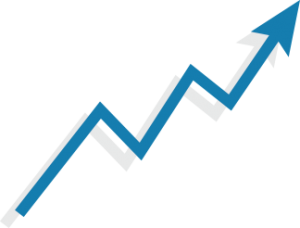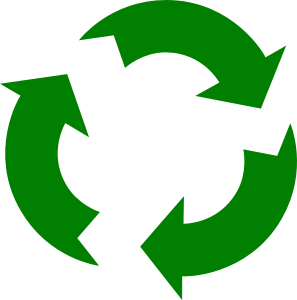Click below to see the nutritional cycling strategies I use for myself and my clients for consistent muscle gain and improved body composition throughout every phase of training:
.
.

As I walk around backstage at bodybuilding shows I have a very high number of competitors, both professional and the best amateurs in the world, approach me about how to add “mass” in the offseason and before their next contest. Some asked for advice on specific body parts, others just wanted to know the best ways to gain muscle without fat. Or, at least how to maximize muscle and minimize any potential fat gain.
So, why not take this as an opportunity to cover the topic both for those of you that asked, and the thousands of you that are looking for guidance on this exact topic?
Intelligent muscle building principles are quickly overcoming mindless strategies for packing on mass amongst the brightest and best fitness and muscle building enthusiasts on the planet.
Gone are the days of simply eating as many calories as possible, regardless of where they come from, and trying to add a few pounds of weight.
Adding arbitrary “weight” is never the goal. Or at least it shouldn’t be. Once your glycogen stores are full, and you’re fully hydrated (this process may actually take up to 2 weeks in some people- depending on how depleted they are), the goal must now be to gain muscle without fat levels creeping up. Not simply adding “weight”.
Here’s why:
The more fat you add to your body, the more your body will start to work against you in the muscle building process.
Added body fat results in higher levels of aromatase (more estrogen, less testosterone), higher levels of inflammation (cortisol), and decreased sensitivity to insulin (poor carb utilization by the muscles).
SO, any time you’re focusing on adding muscle, you MUST take on a cyclic nutritional approach that MATCHES YOUR TRAINING STIMULUS.
I write that with emphasis because it’s extremely important to realize that different types of training require different amounts and types of nutrients.
-
Neurological or strength training places substantially different demands on your body than hypertrophy training.
-
Hypertrophy training places massively different demands on your body than metabolic-lactate based training does.
-
Metabolic-lactate based training demands are at the opposite end of the spectrum compared to neurological training.
-
Primer phases are very different from all of the above.
(More on each of these in the next article HERE)
Your macro nutrients, timing of those nutrients, as well as supplementation should vary for each of those types of training, because the goals and the stimuli are different.
The next questions that immediately arises are; “Do you even know the differences in each of those phases? What are the characteristics of each of those phases? Which one are you in now? What should be the trigger you’re looking for to know when to change phases?”
Here are the 5 main factors that influence the training stimulus:
-
Reps
-
Tempo
-
Rest
-
Volume
-
Frequency
The phase you choose to spend the greatest amount of time in depends on your current state, and your goals. You can only progress as fast as the weakest link so deciding which phase to move into next is dependent on what seems to be holding you back from progressing.
(Learn what to look for to determine if you need to switch training phases in this article)
Back on track: How to eat to gain muscle.
“Bullshit calories, will get you bullshit results”.
Listen, you know by now that unless you’re as gifted as the top bodybuilders in the world, you simply can’t get away with eating whatever you want, training like shit, and “hoping” that you’ll gain muscle without fat.
And no, it has absolutely nothing to do with the drugs. Pro bodybuilders would still be the biggest guys in the gym with or without drugs, drugs just amplify their inherent genetic superiority for building muscle.
If you want to be big, muscular and lean, you need an intelligently systemized approach to what is known as “cyclical nutrition”.
Muscle building isn’t linear. It never can be.
 Meaning that there must be periods of planned progression and growth, followed by periods of expected maintenance or even regression.
Meaning that there must be periods of planned progression and growth, followed by periods of expected maintenance or even regression.
Your DNA, specifically the myostatin gene (and many more) will ensure your do not grow in a linear fashion (meaning continuously) because if you did, you would likely die of cancer and your heart wouldn’t be able to handle all that mass at once. It’s the same reason your metabolism kicks up when you eat more calories. Your body is at constant work to maintain homeostasis or status quo and you’ve got a TON of mechanisms in place to prevent you from getting too far away from this set point.
Leptin, ghrelin, insulin, glucagon, cortisol, estrogen, as well as a number of genes that can be “turned on” or “turned off’ to ensure homeostasis is maintained.
This is why muscle building is a long process. It HAS to be. Adding muscle must be a slow and progressive process or your body wouldn’t be able to sustain it and you would die.
In order to be as aggressive as possible in adding pounds of muscle, you must learn to manipulate the variables that can influence your bodies downregulation of growth.
Here is a list of things that influence muscle building and how your body will work to maintain homeostasis.
-
MTOR, AMPK – is protein being built up or broken down?
-
Insulin/glucagon – are carbs being stored or released for energy? Also, are carbs being preferentially stored in muscle or fat?
-
Cortisol– Is your level of inflammation leading to decreased insulin sensitivity and decreased nutrient uptake?
-
GH – Can add to fat loss, but can also lead to fat storage.
-
Testosterone/Estrogen – Is your body keeping levels of available testosterone high? Or converting it to estrogen via aromatase?
-
Myostatin – Is your body turning on this muscle blocking gene? Or is this gene “disabled” and your muscle building is able to work full steam?
That is a LOT of things to consider and control for.
Each of the above are influenced by the following variables:
- Type of training, weights vs cardio.
- Intensity of training
- Amount of training and cardio.
- Psychological state and level of stress.
- Overall Level of nourishment day to day(are you over or under eating)
- Quality of nourishment when you’re eating (“current state”)
- Level of body fat
- Blood sugar levels
- Hydration
- Level of inflammation.
- Types of foods you eat.
- Timing of foods you eat.
- Cellular composition (Phospholipid bilayer composition)
- Level of fatigue
- Sleep
- Supplementation
- Amount of food per meal (glycemic load)
Each of these factors is vital to your success in building ANY amount of muscle. Whether your goal is to build 5 lbs or 50 lbs, paying attention to these variables will accelerate your process and improve your chances of success.
Failure to acknowledge even one of these factors may be holding you back from achieving the body you’re dreaming of, it may be holding you back from packing on muscle at the fastest rate possible.
ACTION PLAN TO GAIN MUSCLE WITHOUT FAT:
By now you’re asking “ok, how should i eat to make the most of my time, energy, and maximize my muscle building journey”.
 The answer is that you absolutely must cycle your calories based on your training stimulus AND by your bodyfat levels.
The answer is that you absolutely must cycle your calories based on your training stimulus AND by your bodyfat levels.
In order to build muscle, you must be in a substantial caloric excess, but if you remain in a caloric excess for too long and your body will store fat. Not only will it store fat but it actually seems to work in an exponential manner once you hit a certain point.
That critical point appears for most people to be around 12% bodyfat.
Once you go over that tipping point your body will start adding fat faster than it does muscle as a result of a culmination of each of the above mentioned negative variables.
Your workout energy and pumps will start to suffer due to decreased insulin sensitivity. Your testosterone levels plummet, inflammation increases, adding to the insulin resistance and elevated cortisol levels. The constant excess of calories will decrease your body’s sensitivity to MTOR and thereby your ability to synthesize protein is diminished.
RESET PHASE
(Recomposition)
At this point, it’s time for an aggressive change in directions to drop body fat, reduce inflammation, and improve insulin sensitivity.
For some people this phase can last as little as 1-2 weeks. Others will take 4-6. But you must get your bodyfat down under that 12% critical point and the lower you can get it without sacrificing muscle, the longer you will be able to stay in the aggressive GROWTH PHASE
Your Muscle Intelligence™ coach.
BPak
